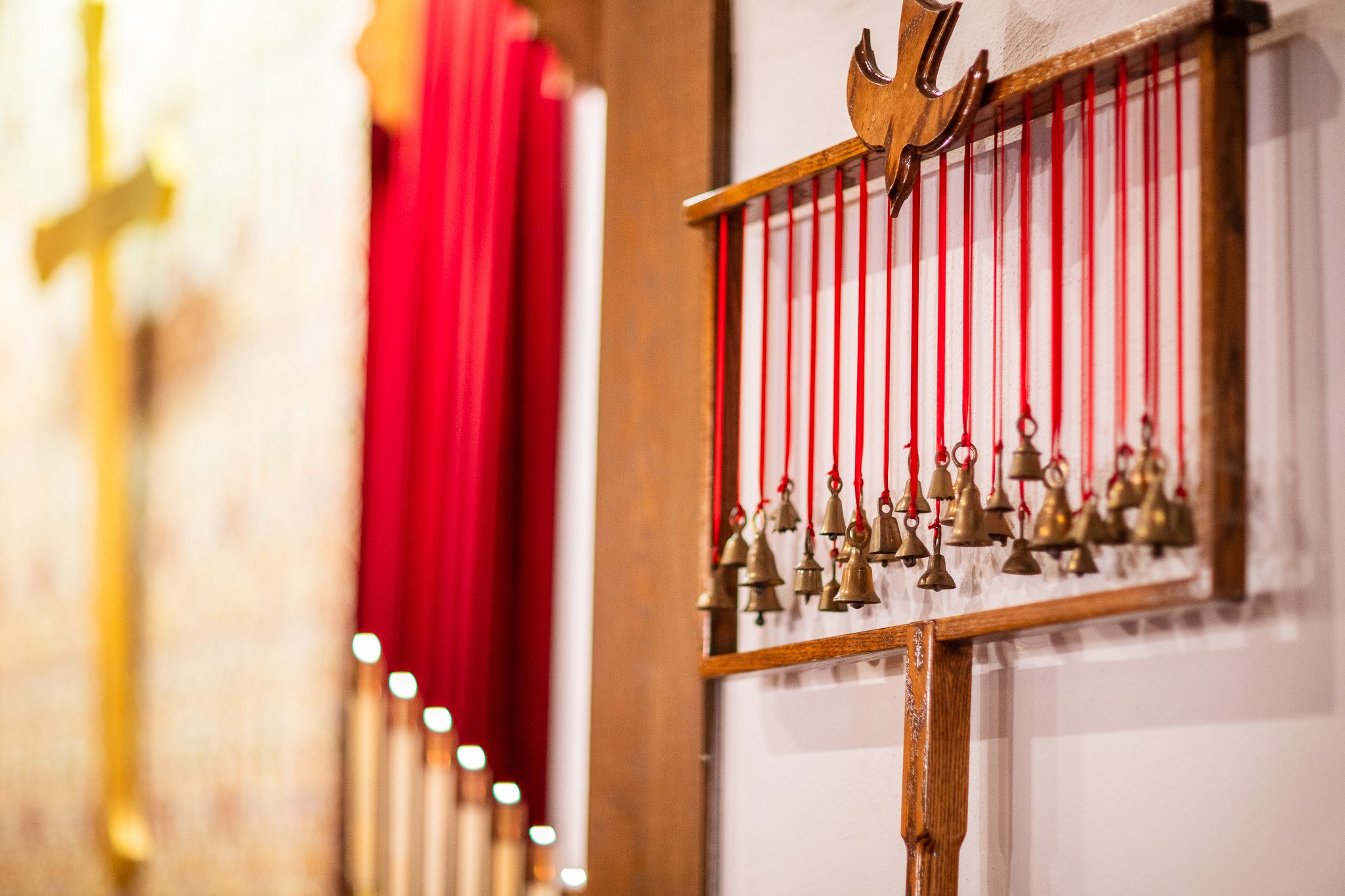
First Time Visiting
We gather on Sundays.
Bible Study/Children’s Sunday School: 9:00-9:45 am
Divine Service: 10:00 am
Location: 6001 Granby St. Norfolk, VA 23505
Contact Us for more information.
We are liturgical.
Our worship follows a pattern every week. First, we confess our sins and hear the absolution (word of forgiveness) spoken by the pastor (who is speaking for Christ). Then we hear readings from the Holy Scriptures, confess our faith using the Nicene Creed, and attend to the sermon. Then we respond to having received God’s Word through an offering and prayers. The high point of the service is Holy Communion. In this Sacrament, the Lord gives us his true body and blood in bread and wine for the forgiveness of our sins, life, and salvation. Finally, we are sent out with a benediction (blessing) so that we might live as God’s people in the world.
Never been to a church that uses this type of liturgy? Don’t worry! No one will judge you. We have bulletins, hymnals, and friendly people that will help you follow along. After two or three times through the service, you’ll have it down.
We love children.
Children of all ages are welcome in our worship services. A chief benefit of the liturgy is that the familiar weekly pattern helps children learn the words and works of God from a young age.
Families with young children are invited and encouraged to sit close to the front so that the children can better see what is happening.
Children make noise, and that is absolutely fine! However, we do have a cry room so that you can tend to your child’s needs when they are urgent.
During the Sunday School hour (9:00 AM; Sep-June) we also have classes for children Pre-K and older. (All volunteers in the children’s Sunday School have been screened according to the protective standards recommended by Ministry Safe.) You can pre-register your child for Sunday School by filling out this form.
We celebrate Holy Communion every Sunday.
In Holy Communion, Jesus gives us his body and blood to eat and drink for the forgiveness of sins, life, and salvation.
Members of other LCMS congregations who are in good standing are welcome to commune with us (please announce to the pastor or an usher before the service).
All other guests may come forward to the communion rail during Holy Communion to receive a blessing (please indicate this is your desire by crossing your arms in an “X” after kneeling at the rail.)
If you desire this gift and you would like to know how to become a communing member at Trinity, then please speak to Pastor Doebler or fill out this contact form.
Our ceremonies amplify the gospel.
We joyfully embrace the use of ceremonial actions and objects as the Church has done throughout its 2,000 years of existence. None of the worship customs listed below are commanded by Scripture, but they each serve to amplify the gospel message that is at the center of our worship: the good news that our sins are forgiven through faith in Jesus Christ, who saves us by his death and resurrection.
Processional Cross
At the beginning of the service, the processional cross leads the way into the church, and at the end, it leads us back into the world. Many in the congregation turn toward the cross as it passes, and some bow their heads in reverence, honoring Christ as the center of our worship.
Candles
Candles in the church symbolize Christ, the Light of the World, who shines in the darkness. You’ll see candles on the altar, carried in procession, and sometimes flanking the reading of the Holy Gospel as a visual reminder of Christ’s presence in the Church through his Word.
Vestments/Colors
Pastors wear vestments (robes) not as a mark of personal importance but as a sign of their role in publicly proclaiming Christ’s Word. The colors of the church year—such as purple for repentance, white for Easter joy, and green for growth—help tell the story of Christ’s work throughout the seasons.
Chanting
Parts of the service are sung rather than spoken, with the pastor, choir, and congregation joining in. If this is new to you, don’t worry—chanting makes the words more memorable and “sticky.” This is especially true for children.
Kneeling/Standing
As we are able, we use our bodies in worship as a way of expressing reverence and devotion. We stand to honor Christ’s words when the Holy Gospel text is read and we kneel during the Lord’s Supper as a sign of humility before Him.
The Sign of the Cross
Some members choose to make the sign of the cross during certain parts of the service, following an ancient Christian practice that Martin Luther also encouraged. This simple motion is a reminder of our baptism, marking us as those redeemed by Christ.
Genuflection
Genuflection—briefly kneeling on one knee—is a traditional act of reverence. The pastor will genuflect during the Nicene Creed at the announcement that the Son of God “was made man” for us and for our salvation. The pastor will also genuflect during the consecration of the bread and wine in order to confess that Christ has made his body and blood present in these elements so that we might eat and drink for the forgiveness of sins, life, and salvation.
Elevation
During the consecration of the Lord’s Supper, the pastor lifts the bread and the cup, drawing our attention to Christ’s true presence in the Sacrament. The congregation responds with adoration and adds their confession of “Amen.” (It is so.)






